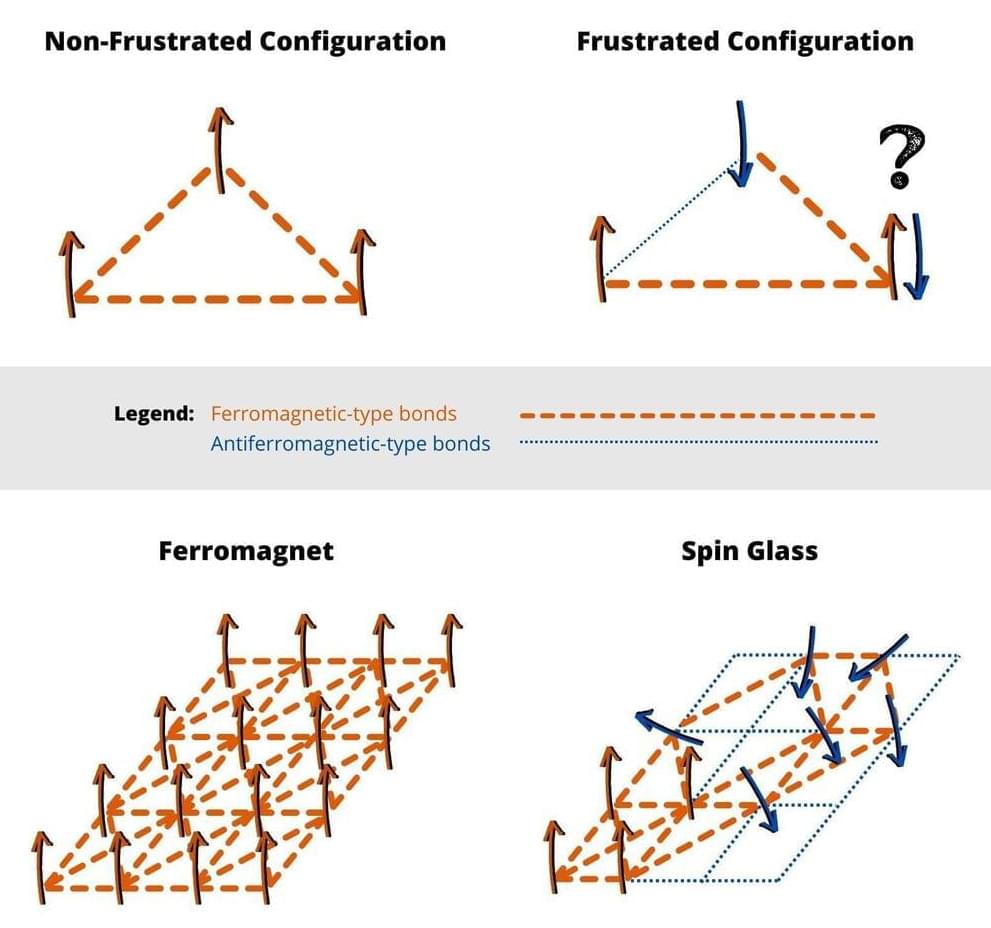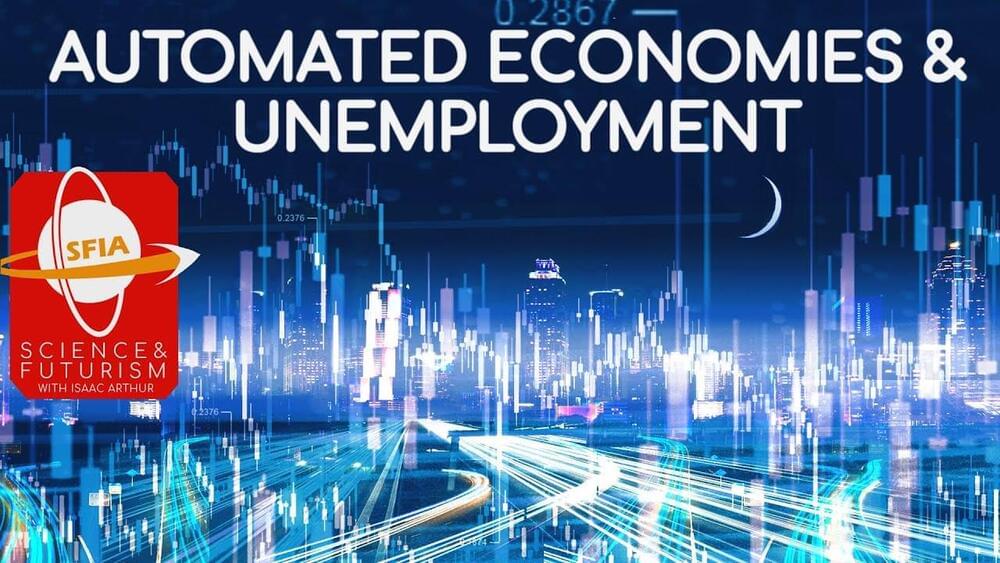Jeff Bezos says he’ll give most of his money to charity, but will that do much to appease critics of his legacy?
Category: economics – Page 61
Artificial Intelligence (AI) is rapidly changing the world. Emerging technologies on a daily basis in AI capabilities have lead to a number of innovations including autonomous vehicles, self-driving flights, robotics, etc. Some of the AI technologies feature predictions on future and accurate decision-making. AI is the best friend to technology leaders who want to make the world a better place with unfolding inventions.
Whether humans agree or not, AI developments are slowly impacting all aspects of the society including the economy. However, some technologies might even bring challenges and risks to the working environment. To keep a track on AI development, good leaders head the AI world to ensure trust, reliability, safety and accuracy.
Intelligent behaviour has long been considered a uniquely human attribute. But when computer science and IT networks started evolving, artificial intelligence and people who stood by them were on the spotlight. AI in today’s world is both developing and under control. Without a transformation here, AI will never fully deliver the problems and dilemmas of business only with data and algorithms. Wise leaders do not only create and capture vital economic values, rather build a more sustainable and legitimate organisation. Leaders in AI sectors have eyes to see AI decisions and ears to hear employees perspective.
Spin glasses are alloys formed by noble metals in which a small amount of iron is dissolved. Although they do not exist in nature and have few applications, they have nevertheless been the focus of interest of statistical physicists for some 50 years. Studies of spin glasses were crucial for Giorgio Parisi’s 2021 Nobel Prize in Physics.
The scientific interest of spin glasses lies in the fact that they are an example of a complex system whose elements interact with each other in a way that is sometimes cooperative and sometimes adversarial. The mathematics developed to understand their behavior can be applied to problems arising in a variety of disciplines, from ecology to machine learning, not to mention economics.
Spin glasses are magnetic systems, that is, systems in which individual elements, the spins, behave like small magnets. Their peculiarity is the co-presence of ferromagnetic-type bonds, which tend to align the spins, with antiferromagnetic-type bonds, which tend to orient them in opposite directions.
Go to https://buyraycon.com/isaacarthur and use code EARLYBF for 20% off sitewide! Brought to you by Raycon.
Many fear that future automation may turn out to be the bane of civilization rather than its liberator. How do we ensure we take the path to a prosperous world and not one of ruin?
Visit our Website: http://www.isaacarthur.net.
Support us on Patreon: https://www.patreon.com/IsaacArthur.
Support us on Subscribestar: https://www.subscribestar.com/isaac-arthur.
Facebook Group: https://www.facebook.com/groups/1583992725237264/
Reddit: https://www.reddit.com/r/IsaacArthur/
Twitter: https://twitter.com/Isaac_A_Arthur on Twitter and RT our future content.
SFIA Discord Server: https://discord.gg/53GAShE
Listen or Download the audio of this episode from Soundcloud: Episode’s Audio-only version: https://soundcloud.com/isaac-arthur-148927746/automated-economies-unemployment.
Episode’s Narration-only version: https://soundcloud.com/isaac-arthur-148927746/automated-econ…ation-only.
Credits:
What Happens If We Can’t Leave Earth?
Science & Futurism with Isaac Arthur.
Episode 368, November 10, 2022
Produced & Narrated by Isaac Arthur.
Written By:
Isaac Arthur.
Editors:
Other tech companies are not far behind.
Jeff Bezos founded Amazon.com Inc., has achieved the unenviable milestone of being the first public company to lose a trillion dollars in market valuation, Bloomberg.
How has Amazon stock fared in 2022?
Sundry Photography/iStock.
Incidentally, Amazon was among the first few companies to cross the $1 trillion valuation in the first place, and the recent dip is a sign of the nervousness in the markets about the slowdown in the global economy, led by the U.S. In a bid to keep their costs down, companies like Meta have recently announced layoffs. However, Amazon has so far avoided a reduction in its headcount.
SAN FRANCISCO — Two weeks after closing a $44 billion deal to buy Twitter, Elon Musk painted a bleak financial picture for the social media company and outlined a series of changes for employees in his first companywide emails to staff.
In two emails sent to workers late on Wednesday, Mr. Musk said the economy was challenging. He added that he planned to end Twitter’s remote work policy and wanted employees to renew their focus on generating revenue and fighting spam.
“Sorry that this is my first email to the company, but there is no way to sugarcoat the message,” Mr. Musk, 51, wrote in one email. “The economic picture ahead is dire.” Twitter was too heavily dependent on advertising and vulnerable to pullbacks in brand spending, he added, and would need to bolster the revenue it gets from subscriptions.
Are online classes the great equalizer?🤣
New psychology findings suggest that attractive students earn higher grades in school, but for female students, this beauty premium disappears when classes are taught remotely. The findings were published in the journal Economic Letters.
A large body of research suggests that physical appearance has an impact on a person’s success. For example, attractive people tend to earn more money and report higher life satisfaction than less attractive people. Interestingly, scholars have yet to agree on the explanation behind this beauty premium.
One account suggests that the beauty advantage can be explained by discrimination. For example, employers may inherently favor attractive over unattractive workers. Another perspective suggests that beauty is a productivity-enhancing attribute. This view suggests that attractiveness lends itself to higher productivity, for example, through increased self-confidence.
Plastic waste is clogging up our rivers and oceans and causing long-lasting environmental damage that is only just starting to come into focus. But a new approach that combines biological and chemical processes could greatly simplify the process of recycling it.
While much of the plastic we use carries symbols indicating it can be recycled, and authorities around the world make a big show about doing so, the reality is that it’s easier said than done. Most recycling processes only work on a single type of plastic, but our waste streams are made up of a complex mixture that can be difficult and expensive to separate.
On top of that, most current chemical recycling processes produce end products of significantly worse quality that can’t be recycled themselves, which means we’re still a long way from the goal of a circular economy when it comes to plastics.
“We face two global crises in housing and climate change.”
Southern California met its first-in-the-world 3D-printed zero net home thanks to Mighty Buildings. As part of a 40-unit community in Desert Hot Springs, these 3D-printed houses also draw attention to environmental and economic strategies.
“We are excited to be the first company in the world to complete what we believe to be the sustainable housing standard of the future,” said Mighty Buildings CEO Slava Solonitsyn, as per Dezeen.
Mighty Buildings.
As mentioned in the Dezeen, the 1,171 square foot (159 square meters) house was finished by the Oakland-based technology corporation in September 2022. The Quatro, a two-bedroom, two-bathroom home built by Ehrlich Yanai Rhee Chaney Architects (EYRC), is said to use a flexible, panelized kit of parts from Mighty Buildings to produce as much energy as it uses.
FOR as long as internal combustion has ruled the roads, vehicles have been fitted with just three basic types of engine: four-stroke, two-stroke, and rotary.
Each differs from the next with regard to its power density and fuel economy, but the general premise of each is very similar. Air and fuel go in, get ignited, and push the piston (or rotor) which in turn rotates the crankshaft creating motion.
It’s a simple enough process, and through well over 100 years of fettling and refining, petrol engines have become ever more potent, economical, and advanced.









